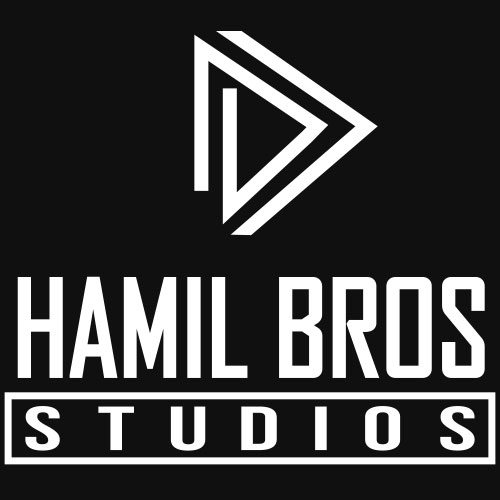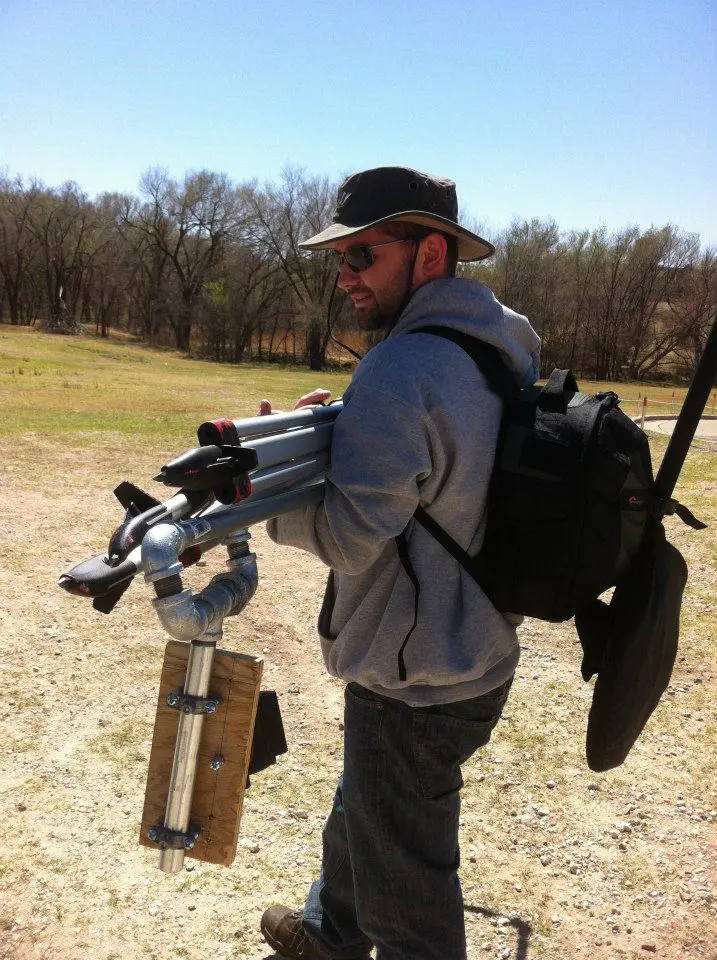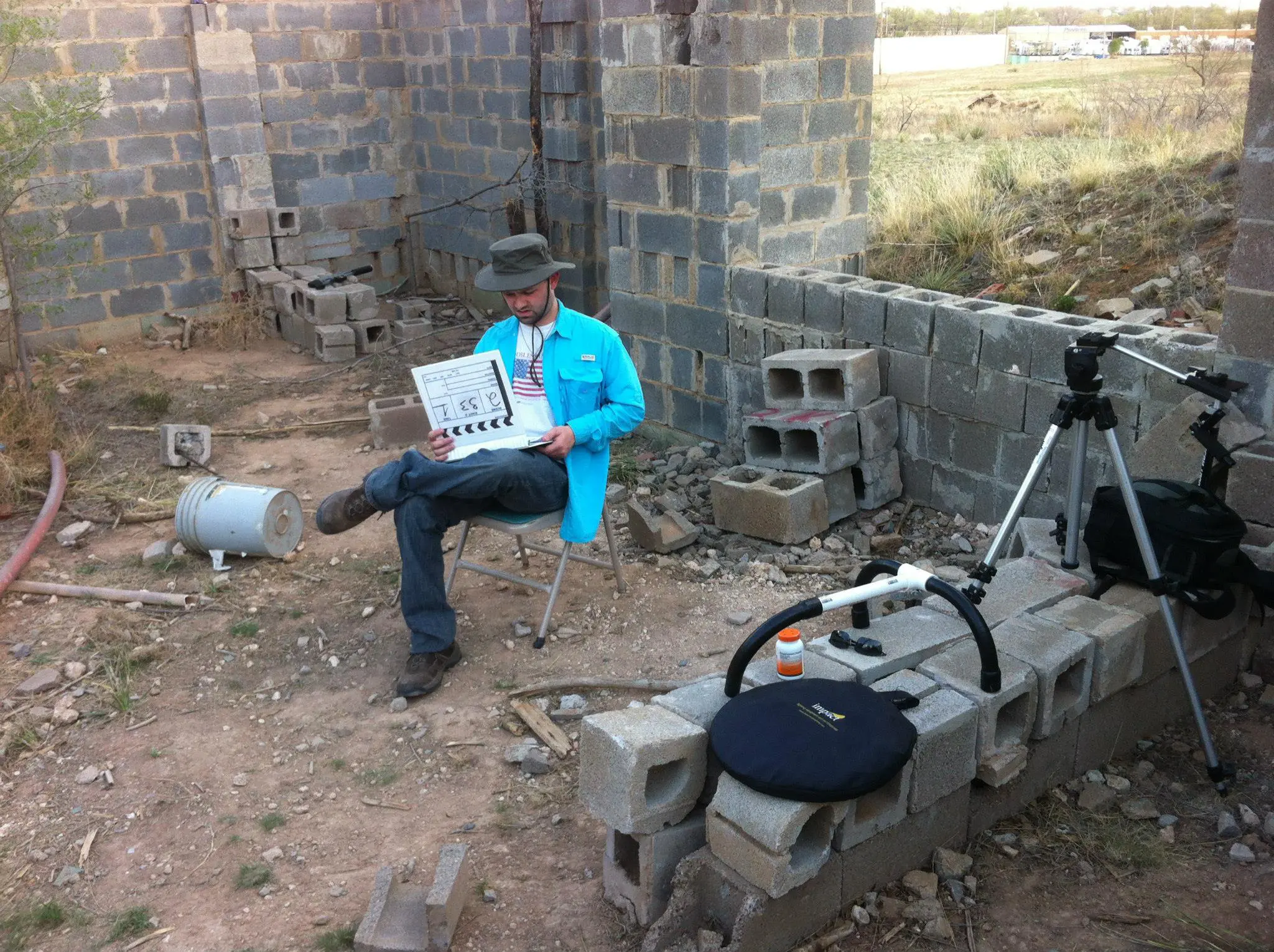The Hostage: 1 Powerful Mind-Bending, Award Winning Short Film
The Pioneer Film Festival
A Hamil Bros Studios Short Film Invitation
Well, last night, Hamil Bros Studios premiered our first short film, The Hostage, at the 2013 Modern Pioneer Film Festival with Tim Day (dayatthemovies.com) in Lubbock, Texas. It won the festival and we were asked to do an interview and panel.
*As an aside, we were preparing to rename, but the film was released under Ross’s previous business name G&H Media Productions.
This video production was a huge undertaking. We had been informed that the inaugural Pioneer Film Festival was taking place at Lubbock Christian University and we were invited to participate. The only real barrier to entry was that a current LCU student needed to be involved. Fortunately, Jacob was enrolled and we qualified. The requirement for the film was that it was to be under 7 minutes.
A Short Film Challenge For Hamil Bros Studios
The Birth of the Concept
From the time we were invited to participate to the time the festival was to take place, was a relatively short period of time, and we had no idea what we were going to shoot. We had no ideas.
During this time, Jacob went on an international trip to Ukraine with the Lubbock Christian University Choir for a European Tour during Spring Break.
At the same time, Ross’ wife, Haley, ended up in the hospital for what should have been a small outpatient surgery. Unfortunately, the doctor overseeing her case and the surgeon never spoke and the doctor kept her in the hospital for 5 days.
This meant that Ross had nothing but time on his hands.
While we’re not exactly sure what prompted it, lightning struck and the script for their short film began to come together. A script aptly named, The Hostage.
The Hostage in a Nutshell
The Hostage revolves around our central character, Benjamin who, while playing video games, receives a message from an unknown source that he is in danger.
Through a fast-paced game of cat-and-mouse Benjamin is led to an excavation site where he is to execute the individual who wants him dead.
Upon arrival, he is knocked unconscious.
Waking several hours later, he finds himself stranded miles from nowhere. Now looking for answers, he makes his way, on foot, back to the site, where he makes the grizzly discovery of bodies of site workers and something dark and familiar: a recurrence of his first visit to the site where he knocks someone unconscious. That someone is himself.
Confused, he converses with himself and they arrive at the conclusion that the hostage is the only way to get answers, only to discover that the hostage is yet another copy.
The hostage succinctly explains that this is all a result of a broken psyche.
The ensuing blood bath leaves Benjamin with no escape where, as his life is ending, he wakes up to yet another message on his television screen.
The Short Film Production
The Production Bible
Leaning heavily on one of his favorite books, The DV Rebel’s Guide, by Stu Maschwitz, Ross began to assemble the short film production schedule.
Now, you have to understand the level of organization that goes into a video production.
For this, Ross drew out storyboards (Ross can’t draw), he made a detailed shot list (Ross detests tedious tasks), and he built the schedule (Ross struggles with detailed organization).
Some of that sounds easy enough, but the schedule was difficult to assemble. Why? Considering all characters with speaking lines were all the same actor and that some of the scenes repeated themselves, Ross had to be meticulous in putting this all together (again, not his strongsuit, but he nailed it). This short film would live and die by this production bible.
Locations: From Dorms to Ruins
No matter how ambitious a script may be, and for us, this was extremely ambitious, available locations can easily limit how much can be done on a no-budget, independent short film.
The dorm room was easy enough as Jacob had his ready and available. It was set up to work perfectly for our needs.
The script originally called for the Hostage to be held in a boiler room basement.
Now, in the year 2013 with virtually no networking contacts, we had no boiler room. We certainly didn’t keep any boiler room basements in our back pockets and the ones we knew we might know of were either too small or there was no chance they would let us shoot our video production in them.
What would we do? Ross had a quick pivot.
Roughly 30 years ago, Lubbock, Texas suffered a tornado that destroyed quite a bit of the downtown area. To this day, there are still the remains of a building that was obliterated by the tornado.
Being the site of many local artists’ photo shoots, we had never heard of a short film being shot there and decided that we would shoot there.
Permission? Who needs it?
This also opened up the opportunity for the site workers to be annihilated.
We grew up on action movies and we needed to have a good action sequence. This site set us up perfectly for success.
Teamwork makes the Dream Work
Casting The Hostage Actors
The first and really only choice for Benjamin, was Jacob’s best friend, James Wheeler.
We had used him for some other things in the past and we knew he was easy to direct and easy to work with.
So, the casting was done… Not!
We must not forget those poor excavation site workers.
Upon hearing about our upcoming short film journey, one of Jacob’s other friends, Abby Johnson, asked if she could help.
Her smallest role in this was acting as one of the site workers.
Finally, Ross’ dreams were fulfilled when Jacob got killed, many times, on screen.
The honorable mention was Ross. He played James’ body double for shots where we needed both characters in the shot. Ross was the closest to James in height and weight, so we made due.
The Production Team
The Hostage truly was a team effort. Ross and Jacob both acted as camera operators, while Abby was whatever we needed her to be. The biggest help was keeping the slate current.
When we said, earlier, that this project was a no-budget short film, we spent around $100 making this entire film. Part of that budget was NOT a proper slate.
What did we do? Do you remember the mention of the production bible earlier? That was it. We put the production bible in a white 3-ring binder with a slip cover. For the slate, we printed a slate design on a regular piece of office paper and slid it into the slip cover, using a dry-erase marker to make all of the necessary changes.
Props and Costumes
DV Rebel 101: when there’s very little money involved, you make use of what you have.
For this we utilized several airsoft and stunt guns that Jacob had purchased over the years.
Additionally, we utilized some old Russian gas masks that he had purchased on eBay. The only thing that was purchased for costumes were the body suits worn by the Benjamin and the site workers.
The Production
The movie took several days to shoot and took a lot of planning. We had to make sure that the parts of the film that were recurring were shot at the same time of day (as close as we could).
We also had to learn to trust the production bible.
To say the production was confusing would be an understatement. Shooting the same actions over and over for different scenes at different times from different angles. It left us scratching our heads many times, oftentimes having to compare the shot list to the script to gain our bearings.
In the end, as much as we thought we were incorrect in our schedule, Ross really nailed it. Everything was correct and we had to let go of the confusion and just trust that he had put in the due diligence in assembling the production schedule.
To be fair, we don’t expect Ross to ever be that organized for anything else with that many moving parts, but, he did this to himself, so we don’t feel too bad.
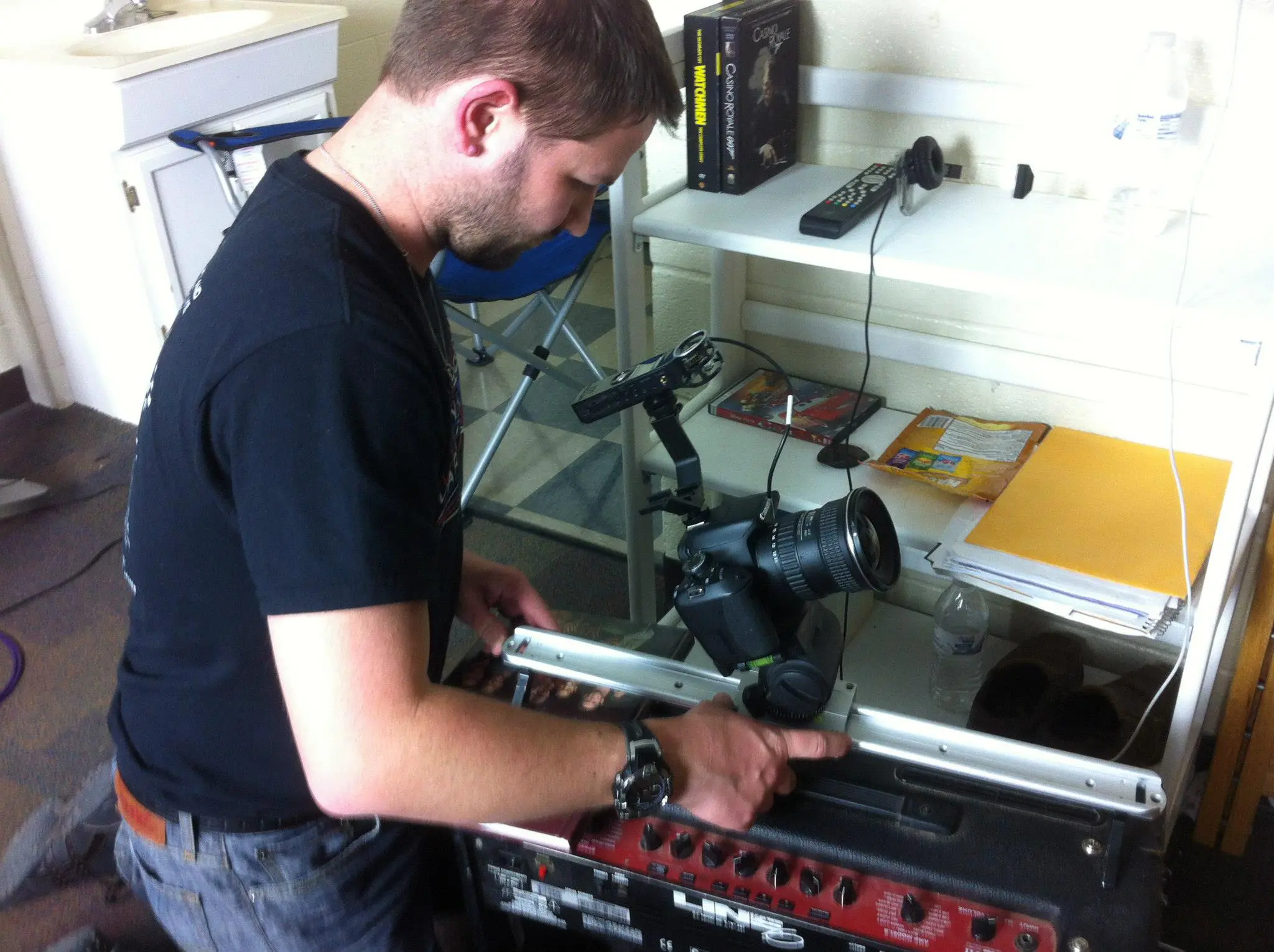
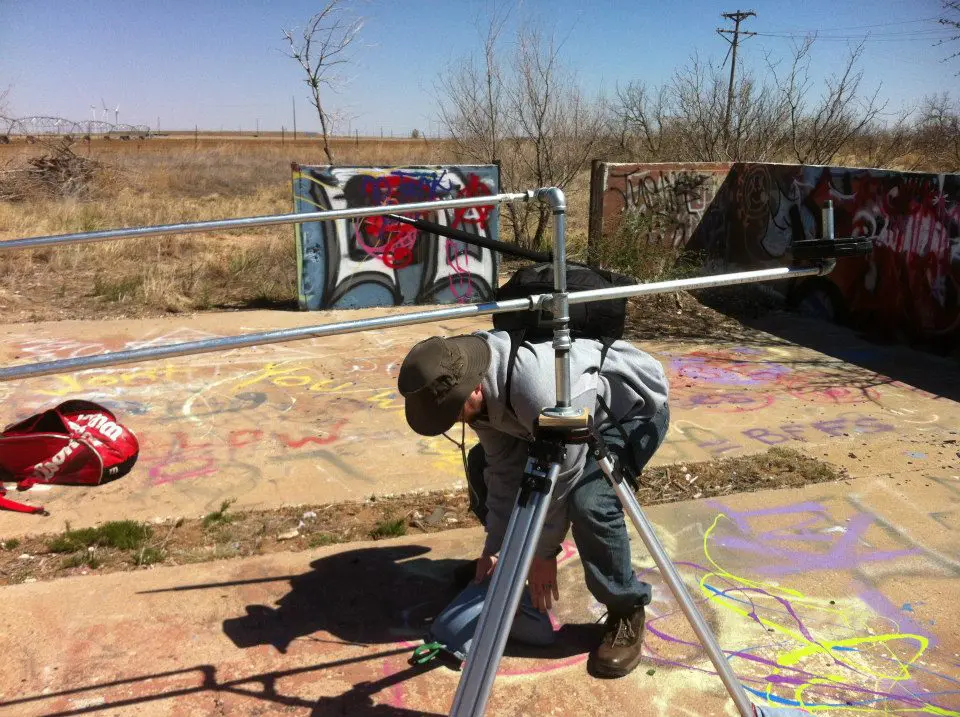
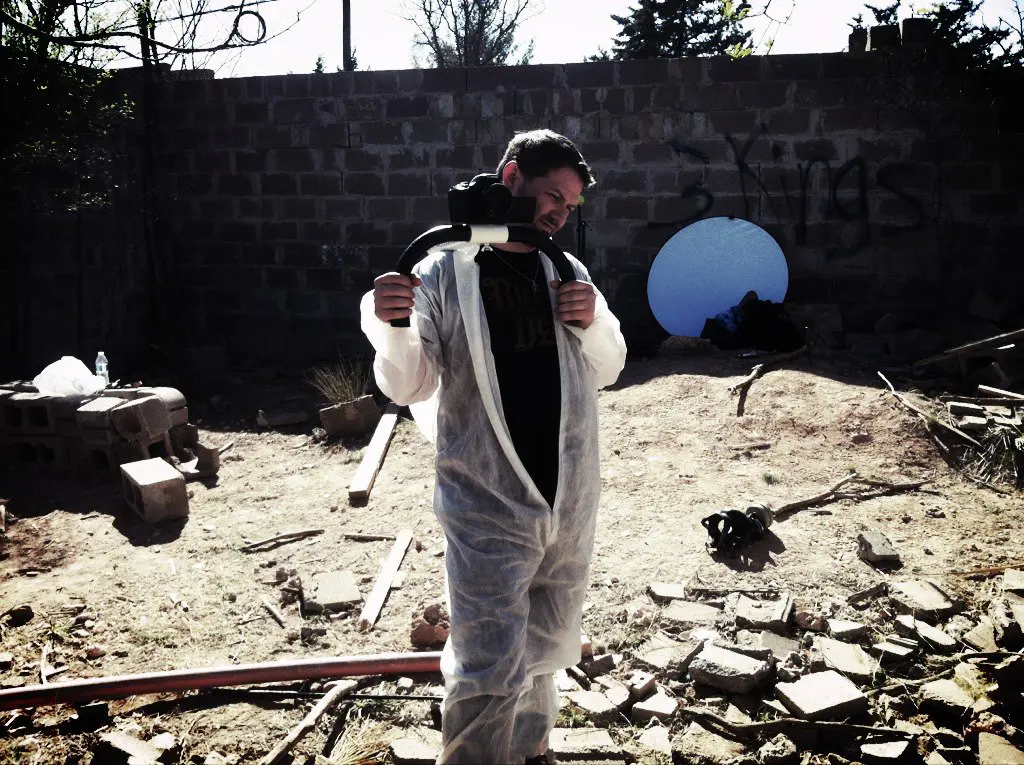
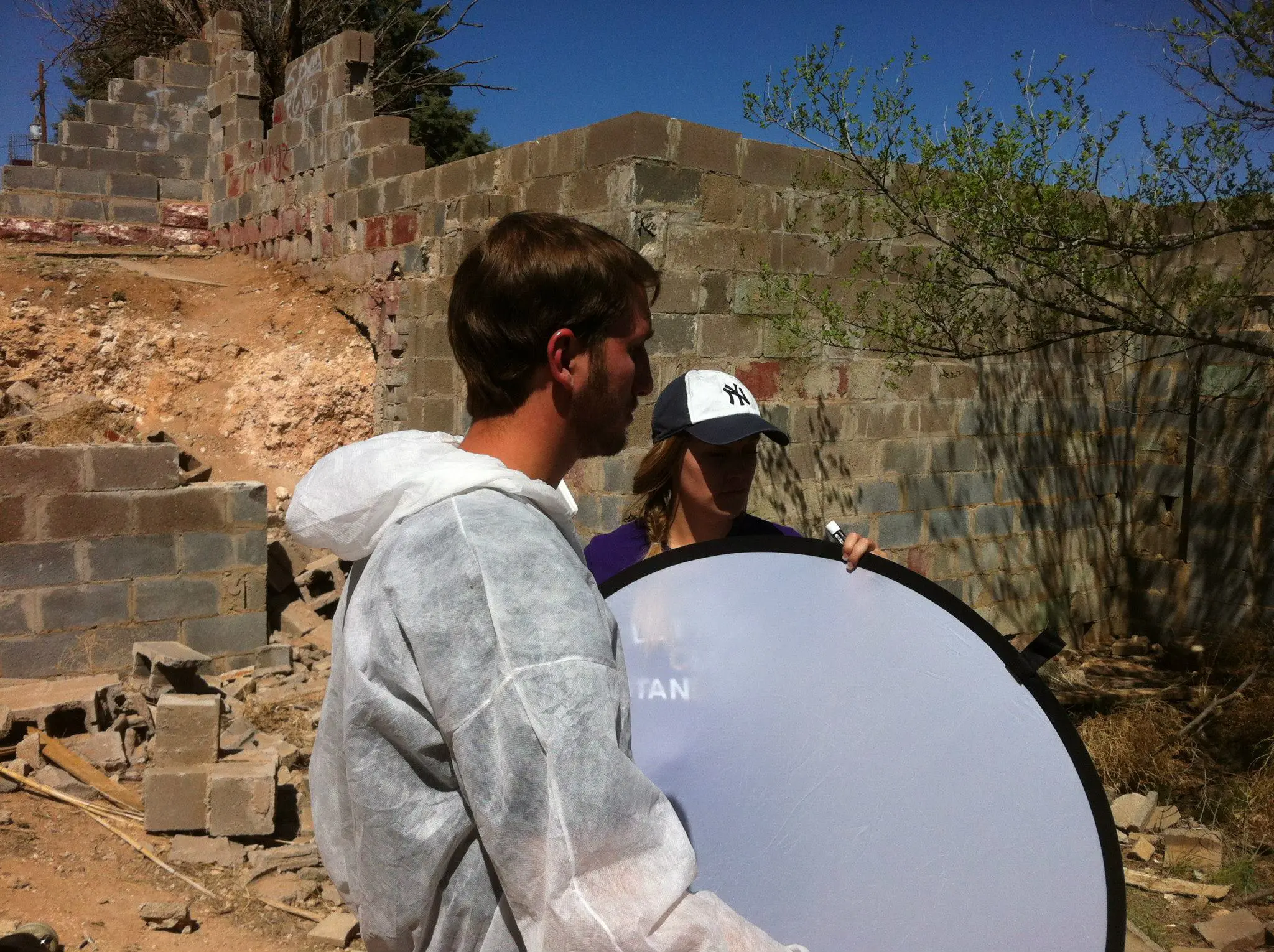
Tech Specs
We may not have the biggest kit, but we are extremely proud of what we do have and to have accomplished this film with so little.
For our camera, we used the Canon t3i, shooting in 24p and sometimes in 60p, interpreting the 60p to 24p for the slow motion effect. Shooting on the flat Technicolor profile, we were able to retain some of the color data.
We did not have a lot of lens options, but we used our Canon 50mm kit lens (aka the “Nifty Fifty”) along with our Tokina 11-16 wide-angle zoom lens.
We used our small Bogen tripod, nearly to death. For the shot where the camera orbits Benjamin outside of his car, we used a small, hand-held steady cam rig, although we limited its use because we really wanted to go mostly handheld for the dramatic effect.
Additionally, we employed use of a small eBay slider Ross had purchased for a commercial shoot. This slider consisted of machined aluminum and nylon for the anti-friction material since there were no wheels, bearings, or oil.
The most impressive bit of camera support was a small jib that we made from plumbing pipe in the aisle at Home Depot. Yes… Seriously.
You probably wouldn’t believe the handheld shoulder rig we used. It was the most make-shift piece of crap you’ve ever seen. It was 3 pieces of 1.5” 90-degree PVC pipe inserted into a 3-way PVC joint with a long-ish ¼-20 bolt run up through it to mount to the bottom of the camera. It was functional, but it wasn’t pretty.
Since Ross has been shooting football for Midland Christian, there were a few other things he got his hands on. A Rode Micro Boom pole and a Rode VideoMic (not the pro version).
We recorded everything into a Zoom H1.
Our light kit consisted of a small kit Ross bought off of Amazon with a green screen kit. It was 3 fixtures, each consisting of four daylight balanced compact fluorescent bulbs inside a soft box. Those were only used in the dorm room scenes as they served zero purpose outdoors.
For our outdoor lighting, we were limited to the sun and a 5-in-one Impact circle bounce. If memory serves, we exclusively used the silk on that 5-in-1.
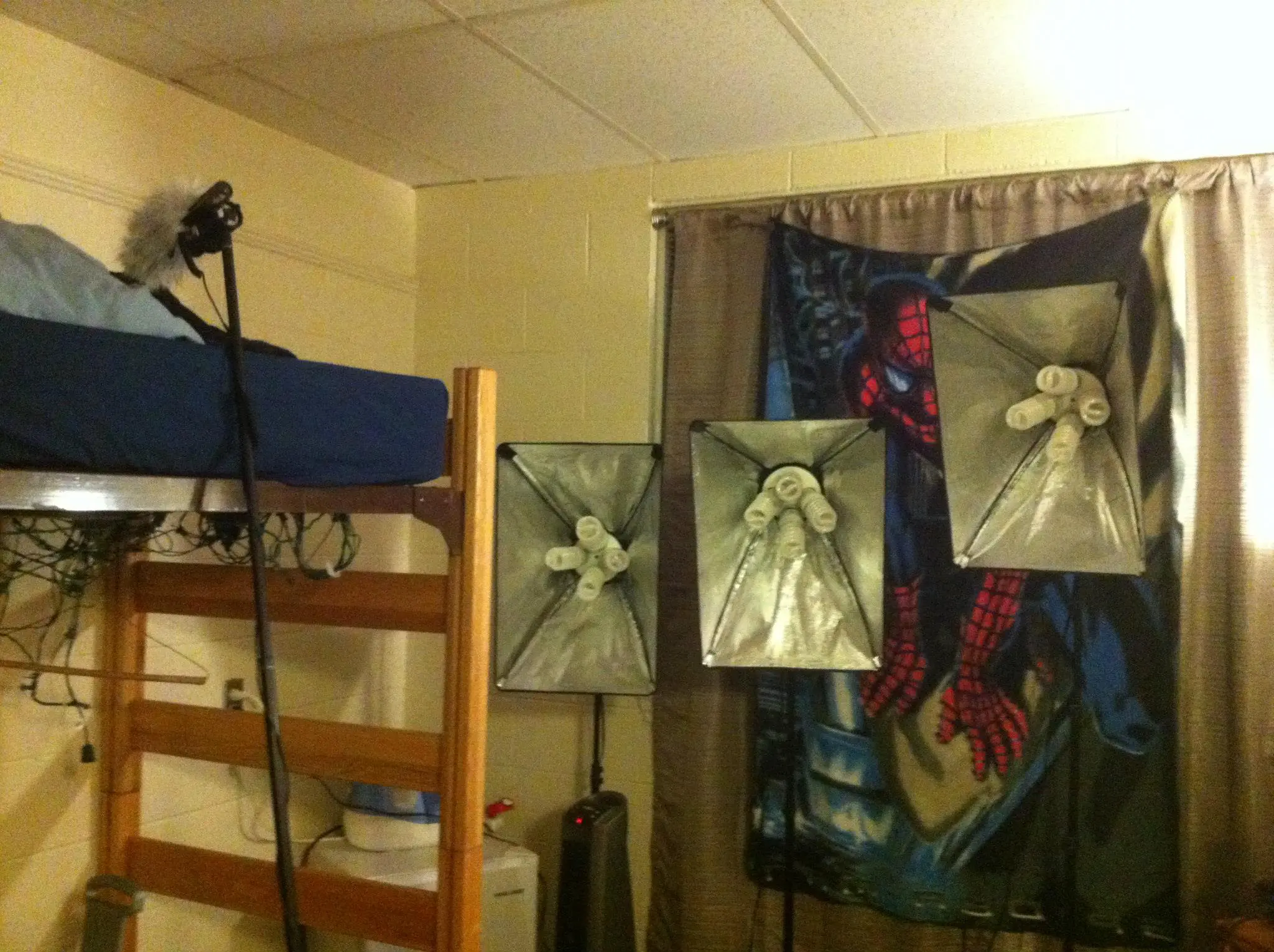
Post Production
Editing this project was looking like it was going to be a nightmare. However, having followed the production bible and slated every single shot, the worst part was simply naming all of the clips to match their slate info. From there, the assembly was quite fast.
Ross loaded everything onto his external hard drive and booted up his ASUS Republic of Gamers laptop.
With all of the clips loaded into Premiere Pro, he began the grind of culling and editing shots.
This proved difficult because of all of the on-set shenanigans. James kept us laughing the whole time.
The edit came together and it was time to start the visual effects process. This was all done in After Effects.
From tracking the television screen to the flip phone screen, the entire process was a large undertaking.
For the “connection lost” screen on the TV, we used one of the templates from the Video Copilot Video Streams HD pack.
All of the gunfire, fire, and blood effects were from the Video Copilot Action Essentials 2k Bundle. These came in very handy because all of the assets were pre-keyed.
The last piece of the VFX puzzle were the 3D assets from flying bullets, to the knife used on the site worker, to the hand grenade at the end. All of those were added using Video Copilot’s Element 3D After Effects Plugin.
For the flying bullet, Ross looked to a Video Copilot tutorial to create the trail of distorted light behind the bullet as it flew in slow motion towards its target. (are you noticing a pattern here?)
One of the more challenging visual effects was the hand grenade.
We couldn’t get our hands on a hand grenade that wasn’t a toy and we couldn’t afford one that looked real, so we relied on the Video Copilot Element 3D Weapons and Projectiles pack.
Taking a vitamin bottle and putting some markers on it, we had James drop the bottle and motion tracked it, replacing it with the 3D hand grenade.
Color
Over the last couple of years, we’ve been working on our color grading skills and this was a great opportunity to really push the boundaries of what we could do. Given that there were so many visual effects shots, we opted to color grade this film in After Effects instead of Davinci Resolve 9.
Utilizing the tools within the Magic Bullet Suite of coloring tools we pushed every frame to the breaking point (not really hard to do with 8-bit Canon footage).
Again, keeping his copy of The DV Rebel’s Guide close by his side, complete with dog-eared pages and a million book marks, he went through Stu’s order of operations for color grading.
The first step is always denoising footage. When it comes to 8-bit footage, the bit depth is so shallow that noise is always a problem, so, using Magic Bullet Denoiser and processing the clips at in a 16-bit pipeline, you can, sometimes, pull a little more out of these clips than they had out of camera while cleaning up some artifacting.
There were effectively 3 color palettes. In Benjamin’s room, the blacks were pushed green, giving us an unnatural feeling where he thought he felt safe.
In the flashbacks and imagination shots, a cooler tone was employed, giving everything a blue tone.
Conversely, when things are going wrong, everything is much warmer looking, resulting in the visual that he’s in the fire.
Music and Sound
The final touch was the audio mix. Using some of the sound effects from the Video Copilot Action Essentials bundle, the Video Copilot Designer Sound Effects, and any other free effects we could get our hands on, we built the sound scape. This process is always time consuming. Any mis-timing and the whole thing falls apart.
The icing on the cake was the music. Using stock music from Video Copilot’s Pro Scores, our library from Neumann Films, some originals Jacob wrote, and a couple of our songs from Cage9 that our friend, Evan Rodaniche, graciously gave us permission to use, every song was placed exactly where we wanted it.
That's a Wrap!
The Race Against the Clock
The film was finished and we were ready to submit. There was a problem though. The short film came in at 8 minutes and 11 seconds, more than a full minute over the maximum allotted time.
There was nothing we could cut out. We had squeezed every frame into this movie and every second was important to the story.
Ross reached out to Tim and begged.
To our fortune, Tim informed us that, as soon as we announced that we were entering the competition, the other submissions withdrew. It was kind of flattering and disappointing at the same time. We were looking forward to the competition and seeing what everyone else had come up with.
However, with this development, Tim waved the timing requirement since there were no other films to be shown.
Final Thoughts
We are honored to have been a part of this film festival and to have won it, although it was by default. It never hurts to have those accolades.
This short film experience taught us some invaluable lessons in the value of a good team, organization and pushing our limits.
While we absolutely bit off more than we could chew, we have the sneaking suspicion that that’s one lesson we didn’t learn. We always go big and we always will.
Show and Tell Your Story
Feeling inspired by our journey? The Hostage was a massive undertaking, but we came out the other side better for it.
If you have a story to tell, don’t let the technical challenges hold you back. We’re here to help you bring your vision to life, no matter how ambitious it is. With our expertise in video production, we’ll handle all the logistics—from detailed scheduling to on-set execution—so you can focus on the creative.
Let’s collaborate on your next short film. Contact us today to start turning your ideas into reality.
